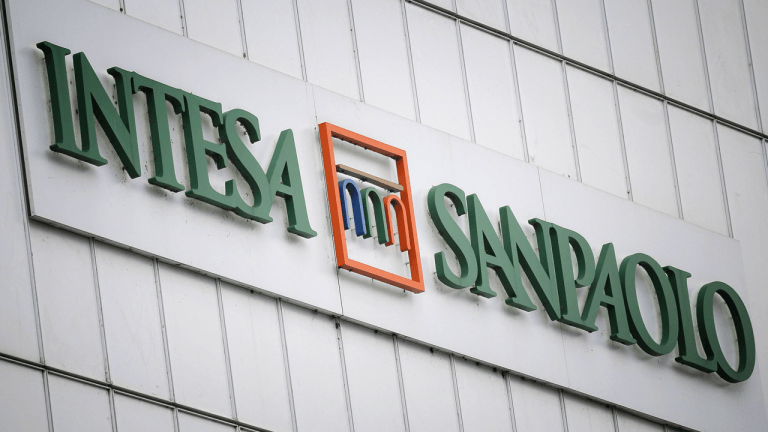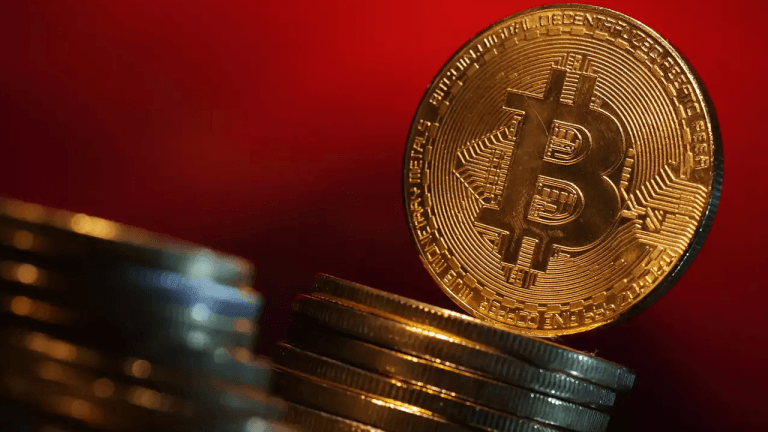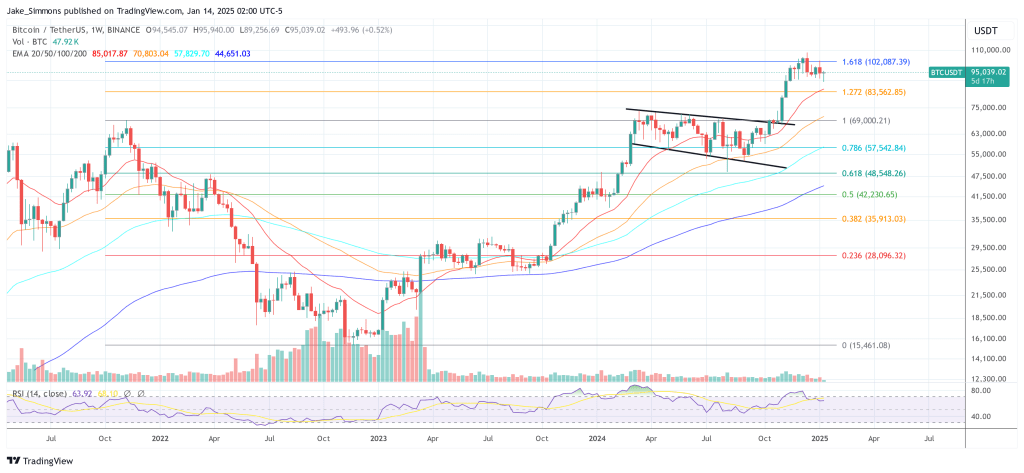In this week’s crypto highlights, we explore the price movements of BTC, ETH, TRB, and ARB. Additionally, this recap includes other notable industry news items that occurred over the last seven days. Without further ado, let’s dive into the latest market developments.
Table of contents
- Market spotlight: the SEC approved all 11 spot Bitcoin ETF applications
- The SEC’s X account was reportedly “hacked,” posting fake spot Bitcoin ETF approval
- Ethereum developers shared an updated project roadmap, specified testnets upgrade schedule
- IRS now requires reporting data about crypto transactions worth at least $10,000
- One sentence news
- BTC price volatility before ETF approval, and sideways movement after that
- ETH price took advantage of spot Bitcoin ETF approval
- TRB evaporated almost 70% of its value in a few hours
- ARB price more than doubled in a month
Market spotlight: the SEC approved all 11 spot Bitcoin ETF applications
After more than a decade since the first filing, U.S. spot Bitcoin exchange-traded funds (ETFs) were approved by the U.S. Securities and Exchange Commission (SEC). And not just one, but all 11 applications simultaneously.
The hype was so big that the link to the approval document occasionally didn’t work, showing an error message. Some even thought that it was another fake, but it wasn’t.
In a statement released on January 10, SEC Chair Gary Gensler confirmed the approval of spot Bitcoin ETFs, but not without some barbs. He said “while we approve the listing and trading of certain spot Bitcoin ETP shares today, we did not approve or endorse Bitcoin,” highlighting that the asset is “also used in illicit activity” (cash is as well, and on a larger scale, but whatever).
Notably, the approval happened with a tiny margin. It turned out that Gary Gensler, Hester Peirce, and Mark Uyeda were the commissioners (out of five) who ultimately voted “yes” to spot Bitcoin ETFs. That means Gensler might have been the ultimate decider. Caroline Crenshaw, one of the commissioners who voted “no,” stated she was “deeply concerned” about this decision. Considering Gensler’s tone of voice in the approval statement, some suggested he was “forced” to vote “yes” due to significant market pressure and expectations.
Fee war
In the week preceding approval, ETF issuers were fighting a “fee war” to attract the first clients. The approval of so many similar ETFs at the same time is not common in the TradFi world. The closest event of this kind was the approval of futures Ethereum ETFs in October 2023. As a result, applicants were trying to stand out somehow.
When fee schedules were released, some experts immediately called them “lower than expected.” But most applicants cut proposed fees even lower, after other asset managers shared their schedules (some even cut fees multiple times in a few days). In addition, many of them will completely waive their fees for a certain period of time, or until a certain threshold. Considering the proposed fees, these ETFs may even attract institutional market participants, who already use crypto-native custody services.
Some other interesting takes:
- BlackRock reportedly seeded $10 million for its ETF, but there are rumors that it has $2 billion in capital lined up from existing Bitcoin holders who want to rotate to its ETF within the first week.
- VanEck and Bitwise pledged to donate 5% and 10%, respectively of their potential profits from spot Bitcoin ETFs, to fund open-source Bitcoin development.
- Grayscale dropped its fees from 2% to 1.5%, meaning it will offer the most expensive product among its competitors. Grayscale has $27 billion of assets under management (AUM) in its Bitcoin trust, and it might see large outflows with the launch of alternative products.
So ETFs were approved and…
The SEC granted “accelerated approval,” meaning that these ETFs could become available for trading the following business day. ETF issuers and respective exchanges were eager to open, so spot Bitcoin ETFs began trading on January 11, 2024.
The first days of trading are considered very important, as they show initial demand for the product, and whether or not it was overhyped. However, first inflows are typically lined up by asset managers in advance. After that, the adoption among financial advisors, pension funds, and other market participants could become crucial for ETFs.
According to Edelman’s research in 2023, 47% of financial advisors possess Bitcoin in their personal portfolios. However, only 12% actively advocate for its inclusion in their clients’ investments. Edelman also highlighted that 77% of advisors expressed their intention to recommend a spot Bitcoin ETF to their clients.
Nevertheless, don’t forget that ETF approval was not the only factor driving recent BTC prices. There are less than 100 days until the next Bitcoin halving, which is expected to occur in mid-April.&
Other noteworthy market events
The SEC’s X account was reportedly “hacked,” posting fake spot Bitcoin ETF approval
It seems that the securities regulator has security issues. Ba dum tss!
On January 9, the SEC’s X (formerly Twitter) account posted a now-removed tweet, claiming that the regulator had approved spot Bitcoin ETFs. Approximately 15 minutes later, SEC Chair Gary Gensler said the regulator’s account was compromised, and the commission hadn’t yet approved the listing and trading of spot Bitcoin exchange-traded products.
Some didn’t believe it, and assumed that it was an “intern’s fat fingers,” remembering Cointelegraph’s mistake. Others thought that a “hacker” posted a scheduled message earlier than expected, but the SEC said the unauthorized tweet “was not made by the SEC or its staff.” There was also speculation the SEC could use this event as a reason to decline or delay ETF approval, because leaving the post would be less damaging to its reputation if in fact that SEC still planned to approve it (some 3D chess moves it seems).
Shortly afterward, X’s safety team said that SEC did not have two-factor authentication (2FA) enabled, and it was a SIM swap attack. Of course, the crypto community reminded Gary Gensler of his own recommendations that enabling 2FA is a must.
In general, the crypto community predominantly responded to this event with memes. The “compromised” SEC tweet was even inscribed onto the Bitcoin blockchain to immortalize this… incident. However, certain U.S. senators raised concerns about the SEC’s internal cybersecurity procedures, demanding clarification.
Ethereum developers shared an updated project roadmap, specified testnets upgrade schedule
Ethereum co-founder Vitalik Buterin shared the Ethereum roadmap for 2024, outlining the project’s continued focus on six main components: the Merge, the Surge, the Scourge, the Verge, the Purge, and the Splurge. If you think this sounds like some kind of “Wunschpunsch mega magic,” you’re not alone.
In layman’s terms, these Ethereum components mean:
- The Merge — a move toward the decentralized proof of stake (PoS) network.
- The Surge — a boost of transaction throughput by making layer 2 (L2) faster and cheaper.
- The Scourge — mitigation of centralization concerns related to liquid staking and other practices within the network.
- The Verge — improving transaction verification to make data structure more efficient.
- The Purge — cleaning old network data and history. It’s not just a teenager’s move (with web browsers). This could significantly help optimize the Ethereum blockchain size, which is already near 1 TB.
- The Splurge — making hot fixes along the way.
In addition, Ethereum developers confirmed the testnet upgrade timelines for the next hardfork called Dencun, which is focused on turbocharging L2s. The Dencun upgrade will begin testing on:
- Goerli — January 17
- Sepolia — January 30
- Holesky —& February 7.&
- Mainnet — TBD.
IRS now requires reporting data about crypto transactions worth at least& $10,000
According to a new rule that went into effect on January 1, 2024, U.S. businesses and professional traders who receive over $10,000 worth of cryptocurrencies will need to report their transactions to the Internal Revenue Service (IRS), within 15 days.&
This includes the name, address, and Social Security number (SSN) of the sender, as well as the amount, date, and nature of the transaction. Those who fail to file a report within 15 days of a transaction could be charged with a felony offense.
Currently, the IRS has not issued any official guidance regarding the reporting methods of this change. There is also uncertainty surrounding whether the ruling applies solely to crypto exchanges, or extends to those who receive cash payments from crypto transactions.
Forbes reported that this rule specifically addresses payments received from other U.S. individuals or entities. Shehan Chandrasekera, CoinTracker’s Head of Tax Strategy, mentioned that the rule applies to those engaged in activities in a business-like manner. He clarified that if you are “a simple crypto investor without a trade or business,” you are not impacted by this rule.
One sentence news
- A team of former Citigroup executives plans to offer Bitcoin-backed securities, similar to American depositary receipts (ADRs), that reportedly don’t need to be approved by the SEC.
- South Korea’s Financial Services Commission (FSC) proposed an amendment that would effectively prohibit local citizens from purchasing cryptocurrencies using credit cards.& &
- The proposal of a Bitcoin Core developer, Luke Dashjr, to filter out Ordinals transactions was shut down, after causing acrimonious debate among Bitcoin developers and the community.&
- Visa announced the launch of a new loyalty service that will allow brands to create digital wallets for customers to store reward points.
- A special economic zone in Honduras formally acknowledged Bitcoin as a unit of account, permitting its use for assessing the market value of goods and services.
- Binance, KuCoin, Huobi, Kraken, Gate.io, Bittrex, Bitstamp, MEXC Global, and Bitfinex were sent “show cause” notices by the Indian government, and their apps were removed from the local Apple App store.
Notable price performances
BTC price volatility before ETF approval, and sideways movement after that
Over the last week, it seems that fake news and loud statements brought more volatility to Bitcoin markets than real events. On January 3, Bitcoin suffered a flash crash below $41,000, amid speculative reports that spot ETF applications would be denied. This drop was accompanied by almost $700 million in daily crypto liquidations.&
When ETF issuers made “final” amendments to their filings, and released their fee schedules, the Bitcoin price jumped to $47,000. The “compromised” SEC tweet caused another wave of fluctuations, first pushing the price to $48,000, then back to $45,000. After the real SEC approval, Bitcoin was predominantly moving sideways. It seems BTC just wanted to chill a bit, after recent wild rides. The initial ETF demand could help define whether or not BTC approval was priced in, as well as further BTC price direction.
Bitcoin ended last year with a four-month green streak that we highlighted as possible ever since the asset’s positive performance in September. However, the last time this happened, Bitcoin followed with a red January.&
The BTC price approached the upper border of a downside Ichimoku cloud (green), which acted as a price resistance for pre-halving rallies. In addition, the weekly RSI started showing signs of bearish divergence. Almost 90% of Bitcoin is currently held in profit, which could potentially incentivize bearish pressure. As a result, this could limit Bitcoin’s upside potential in the short term.
ETH price took advantage of spot Bitcoin ETF approval
Ethereum was one of the major winners on spot Bitcoin ETF approval day. While the BTC price remained almost flat, ETH saw double-digit gains, moving above $2,600 for the first time since May 2022.&
The potential catalyst could be anticipation of spot Ethereum ETFs, which may have a “straight shot for approval,” after the SEC greenlighted Bitcoin products. Bloomberg’s ETF analyst Eric Balchunas estimated a 70% chance that spot ETH ETFs will be approved by May 2024.
For Bitcoin, it’s like it bought a dress for its big day, invited friends, and did its makeup extra “wow,” only to find out that many are already looking in other directions.
In addition, January has historically been quite beneficial for Ethereum in general, as it predominantly outperforms Bitcoin during the month. The ETH/BTC chart also reached a long-term support line (white line), and formed a bullish divergence (cyan lines) nearby. This suggests that ETH may steal the spotlight in the coming weeks, or months, and potentially continue to outperform Bitcoin.
TRB evaporated almost 70% of its value in a few hours
On New Year’s Eve, while most people were waiting for 12 p.m., TRB holders decided to draw 12 o’clock on a chart. The TRB price jumped from $250 to around $600, and then dropped to $130. According to Kaiko, there were significant price dislocations across exchanges, showing the TRB price from $500 to $700, at the rally peak.
The on-chain analytical platform Lookonchain reported that the Tellor team deposited 4,211 TRB tokens, valued at $2.4 million, into Coinbase. Interestingly, this deposit occurred almost simultaneously with TRB reaching its peak, and subsequently experiencing a rapid decline of approximately 70% within a few hours.&
According to IntoTheBlock, just 14 addresses control over 70% of the token supply, meaning that the asset could be the subject of pump-and-dump events. Following this rapid drop, the asset predominantly moved downwards, reaching the 0.786 Fibonacci point.
ARB price more than doubled in a month
Over the last three months, the ARB price saw parabolic growth, from $0.76 to $2.26. As a result, ARB turned into one of the best-performing assets in the L2 sector.&
According to DefiLlama, Arbitrum’s total value locked (TVL) reached an all-time high, moving above $2.52 billion. In terms of trading volume, ARB reached fourth place, excluding stablecoins. Arbitrum also became the first L2 to cross $1 billion in daily volume on Uniswap.
The potential catalyst behind this rally could be anticipation of the upcoming Ethereum Dencun upgrade, focused on reducing rollup transaction costs. This is expected to reduce gas fees paid per transaction, and improve network capacity.
Currently, ARB is inside the overbought zone, with RSI on weekly and lower timeframes. This suggests that the market could be overheated, and price correction might follow. Throughout the recent rally, the middle of the Bollinger channel on a daily chart acted as dynamic support for the price.
Tune in next week, and every week, for the latest CEX.IO crypto highlights. For more information, head over to the Exchange to check current prices, or stop by CEX.IO University to continue expanding your crypto knowledge.
Exchange Plus is currently not available in the U.S. Check the list of supported jurisdictions here.
Disclaimer: For information purposes only. Not investment or financial advice. Seek professional advice. Digital assets involve risk. Do your own research.

You can get bonuses upto $100 FREE BONUS when you:
💰 Install these recommended apps:
💲 SocialGood - 100% Crypto Back on Everyday Shopping
💲 xPortal - The DeFi For The Next Billion
💲 CryptoTab Browser - Lightweight, fast, and ready to mine!
💰 Register on these recommended exchanges:
🟡 Binance🟡 Bitfinex🟡 Bitmart🟡 Bittrex🟡 Bitget
🟡 CoinEx🟡 Crypto.com🟡 Gate.io🟡 Huobi🟡 Kucoin.


















Comments